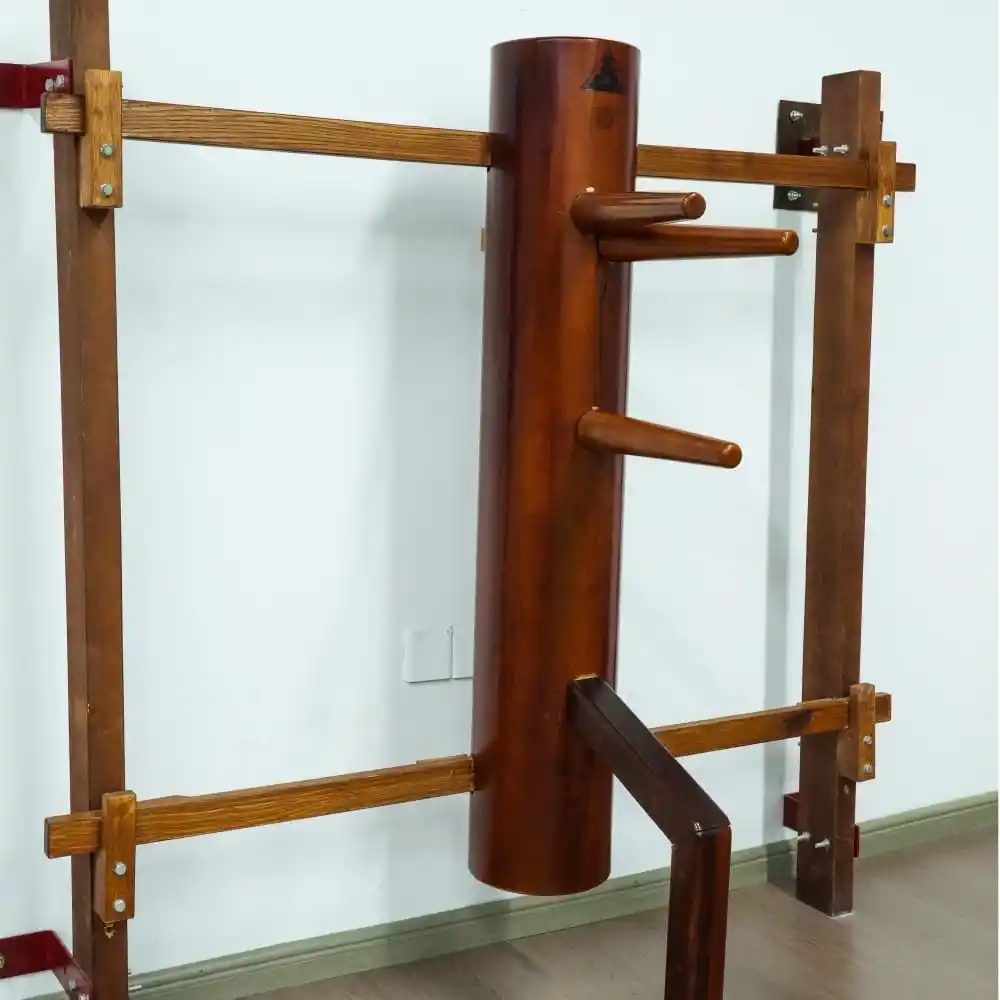In the vast ocean of Chinese martial arts, Wing Chun stands out for its simplicity and efficiency in technique, becoming one of the most revered martial art systems worldwide. Among the core elements of Wing Chun, the Wooden Dummy holds a special place. It is not just a training tool; it is a symbol and a crucial part of the Wing Chun system. Carrying centuries of martial wisdom, it helps countless martial artists improve their skills and refine their techniques. So, what is the origin of the Wooden Dummy? How has it evolved to become such an indispensable part of Wing Chun? What training functions does it serve, and how does it help martial artists advance their skills? Today, we will uncover these mysteries.
The Origin and Evolution of the Wooden Dummy
The origin of the Wooden Dummy is closely linked to the development of Wing Chun. There are several versions of the story regarding its creation, but the most popular version ties it to the Shaolin Temple. According to legend, the Wooden Dummy was initially invented by Shaolin monks with the purpose of simulating real combat scenarios, allowing disciples to practice their techniques without a live opponent. The early Wooden Dummies were much simpler, consisting mainly of a wooden post and some basic wooden arms, designed to help monks hone their combat skills.
However, as time went by, the design and function of the Wooden Dummy gradually improved. With the development of Wing Chun, the Wooden Dummy evolved into a more refined training tool, specifically suited for Wing Chun techniques. One of the key figures in this evolution was Yim Wing Chun, one of the art’s founders. According to historical records, Yim Wing Chun used the Wooden Dummy to enhance her skills when she faced stronger opponents. This innovative training method laid the foundation for the widespread use of the Wooden Dummy in Wing Chun.
As Wing Chun techniques continued to evolve, the Wooden Dummy became a central part of training. It went from being a simple tool to a highly sophisticated combat simulator, capable of mimicking a wide range of real-world fighting scenarios. It is now an essential tool in Wing Chun training, as well as a cultural treasure that continues to be passed down.
The Functions and Training Value of the Wooden Dummy
The Wooden Dummy serves as a “combat simulator” in Wing Chun training. It plays a vital role in helping martial artists improve their techniques, but it also has a significant impact on a practitioner’s mindset, combat strategy, and overall mental fortitude. The design of the Wooden Dummy is a concentrated form of Wing Chun techniques, enabling practitioners to master practical combat skills in the shortest time possible. Through interaction with the Wooden Dummy, practitioners can not only hone their hand techniques and footwork but also experience the philosophical principles of Wing Chun.
1.Improving Reaction Speed and Agility
-
One of the greatest advantages of the Wooden Dummy is its ability to simulate various combat scenarios. During training, practitioners must constantly engage with the wooden arms of the dummy, practicing strikes, blocks, and evasions. This interaction helps practitioners increase their reaction speed and agility, especially in close-quarters combat, enabling them to respond quickly and take control of the fight.
2.Improving Technique Precision and Power
-
Another important function of the Wooden Dummy is helping practitioners refine their precision and power in strikes. By repeatedly striking the wooden arms, practitioners can feel the feedback from the dummy, adjusting their techniques accordingly. With constant practice, their strikes become more accurate and powerful, allowing them to deliver focused, penetrating blows.
3.Enhancing Coordination of Footwork and Body Movement
-
The Wooden Dummy not only tests hand techniques but also requires practitioners to coordinate their footwork and body movement. Wing Chun emphasizes agility and precision in footwork, and training with the Wooden Dummy helps practitioners improve their movement coordination. By practicing around the dummy, they learn to move swiftly and smoothly, making their footwork as fluid as their hand techniques.
4.Internal Philosophy and Mental Toughness
-
The Wooden Dummy is not only an external training tool; it also contains deep philosophical principles. Wing Chun’s core philosophy is based on “simplicity, speed, and precision.” Each strike and interaction with the Wooden Dummy reflects these principles in practice. Through constant training, practitioners develop inner strength and mental resilience, learning to stay calm and focused under pressure.
5.Strengthening Tactical and Combat Ability
-
Perhaps the most significant advantage of the Wooden Dummy is its ability to simulate combat. Practitioners can engage with the dummy from multiple angles and positions, helping them develop





